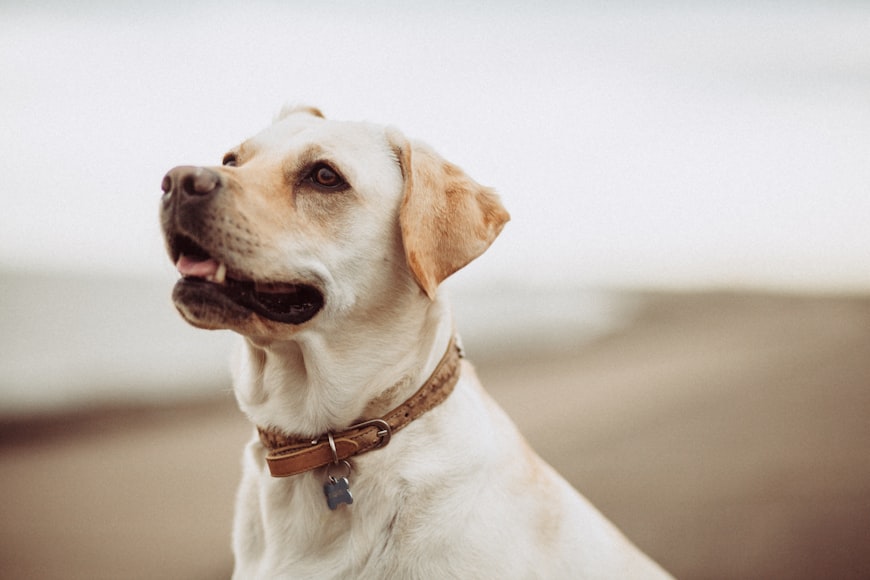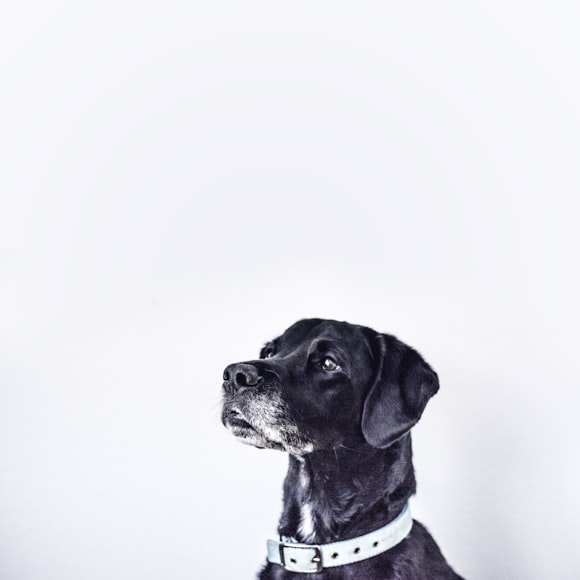I. Establishing Trust

I. Establishing Trust
Trust is the foundation of a strong bond between humans and dogs. Here’s how to lay a solid foundation:
A. Understanding Your Dog’s Body Language
Pay attention to your dog’s ears, eyes, tail, and overall posture. These subtle cues reveal their emotional state and intentions. Knowing what your dog is feeling allows you to respond appropriately and build trust.
- Relaxed and Happy: Ears up and forward, tail wagging, soft eyes.
- Alert and Curious: Ears raised and pointed forward, eyes focused, tail held high.
- Anxious or Stressed: Ears pinned back, tail tucked between legs, dilated pupils.
- Aggressive or Scared: Ears laid flat, tail down and rigid, teeth bared.
B. Building a Secure and Nurturing Environment
Create a safe and predictable space for your dog where they feel comfortable and loved. This includes:
- Establishing Clear Boundaries: Set rules and consequences for acceptable behavior to provide structure and reduce anxiety.
- Providing Physical and Emotional Comfort: Offer a comfortable bed, access to fresh water, and regular grooming to meet their basic needs.
- Spending Quality Time: Dedicate time each day for bonding activities such as walks, playtime, and cuddles.
- Positive Reinforcement: Reward good behavior with treats, praise, and affection to encourage desired actions.
- Avoiding Punishment: Negative reinforcement can damage trust and create fear. Focus on positive and constructive methods instead.
Remember, building trust is an ongoing process that requires consistency, patience, and respectful communication. By understanding your dog’s body language and creating a secure environment, you can foster a deep and meaningful connection that will last a lifetime.
II. Positive Reinforcement

As pet owners, we all strive to develop a deep and meaningful bond with our furry companions. Dog training plays a crucial role in this endeavor, and one of the most effective methods is positive reinforcement.
What is Positive Reinforcement?
Positive reinforcement is a training technique that focuses on rewarding desired behaviors, rather than punishing undesirable ones. By associating pleasant experiences with certain actions, you can encourage your dog to repeat those behaviors in the future.
Benefits of Positive Reinforcement
Using positive reinforcement offers numerous benefits, including:
- Increased motivation: Rewards serve as incentives for your dog to cooperate and perform desired behaviors.
- Enhanced communication: Positive reinforcement helps your dog understand what you want them to do, leading to better communication.
- Reduced stress and anxiety: Punishment-based training can cause fear and anxiety, while positive reinforcement creates a positive and stress-free learning environment.
- Stronger bond: By rewarding your dog for desirable behaviors, you build a relationship based on trust and mutual respect.
How to Use Positive Reinforcement
Implementing positive reinforcement is easy and straightforward:
1. Identify the Desired Behavior:
Determine the specific behavior you want your dog to exhibit, such as sitting, staying, or coming when called.
2. Choose a Reward:
Select a high-value reward that your dog finds irresistible, such as treats, praise, or affection.
3. Time the Reward Correctly:
Give the reward immediately after your dog performs the desired behavior, so they associate it with the positive outcome.
4. Consistency is Key:
Be consistent and provide rewards every time your dog exhibits the desired behavior. This will reinforce the connection between the action and the reward.
5. Avoid Punishment:
Punishment can have negative effects on your dog’s behavior and relationship with you. Instead, focus ausschließlich on rewarding desirable actions.
Examples of Positive Reinforcement
- Giving a treat to your dog when they sit on command.
- Praising your dog enthusiastically for coming when called.
- Rubbing your dog’s belly when they’re calm and well-behaved.
Conclusion
Positive reinforcement is an effective and rewarding way to train your dog and create a strong bond. By rewarding desired behaviors, you motivate your dog to cooperate, improve communication, and reduce stress. With consistent and positive reinforcement, you can build an unbreakable connection with your furry best friend.
III. Communication and Understanding

Establishing clear communication and understanding is crucial for fostering a strong bond between you and your furry companion. This includes both learning how to effectively convey your commands and interpreting your dog’s signals.
A. Learning and Using Basic Commands
- Establish Key Commands: Start with essential commands such as “sit,” “stay,” “come,” “heel,” and “leave it.”
- Be Consistent and Patient: Use the same command word each time and reinforce it with positive reinforcement.
- Use Hand Signals and Body Language: Combine verbal commands with hand signals and body language for better clarity.
- Reward Good Behavior: Offer treats, praise, or a favorite toy when your dog responds correctly.
- Practice in Various Environments: Train in different settings, such as the park, home, and street, to generalize the commands.
B. Interpreting Your Dog’s Signals and Responding Appropriately
- Vocalizations: Growling, barking, whining, and howling are ways your dog communicates its feelings or needs.
- Body Language: Observe your dog’s posture, tail position, ear movements, and facial expressions for clues about its state of mind.
- Subtle Cues: Pay attention to your dog’s subtle behaviors, such as a cocked head or a raised paw, which can indicate curiosity or a desire for attention.
- Respond Empathetically: When your dog communicates, respond with empathy and understanding. If it’s displaying anxiety, comfort it; if it’s excited, engage in a fun activity.
- Avoid Punishment: Never punish your dog for communicating its needs or feelings. Instead, focus on redirecting or providing alternative behavior outlets.
By mastering basic commands and attuning yourself to your dog’s communication cues, you can create a shared language that strengthens your bond. It fosters mutual respect, improves obedience, and allows you to understand and fulfill your dog’s needs, leading to a more harmonious and fulfilling relationship.
IV. Training for Specific Behaviors

In addition to fostering a general bond through positive reinforcement and affection, targeted training for specific behaviors plays a crucial role in building a deep connection between you and your pet.
A. Teaching Obedience Commands
- Sit, Stay, Come: Teach your dog these basic obedience commands to establish clear communication and control. These commands enhance both your pet’s safety and your enjoyment of their company.
- Heel: Train your dog to walk beside you on a loose leash, instilling obedience and preventing distractions from causing problems.
B. Addressing Problem Behaviors
- Jumping: Teach your dog to greet people and other dogs calmly by sitting or lying down instead of jumping. This behavior is not only annoying but can also be dangerous.
- Barking: Determine the underlying cause of your dog’s barking (e.g., anxiety, boredom, or territorial instinct) and address it accordingly. Reward your dog for quiet behavior.
- Pulling on the Leash: Train your dog to walk calmly on a leash by gently correcting pulling and rewarding good behavior. Avoid using excessive force or harsh punishment.
How Training Strengthens the Bond:
- Improved Communication: Training enables you and your pet to communicate effectively, enhancing understanding and trust.
- Mental Stimulation: Training provides your dog with mental challenges, stimulating their intellect and strengthening their cognitive abilities.
- Bonding through Effort: The effort you put into training together creates a sense of accomplishment and shared experience, deepening the bond.
- Respect and Submission: Dogs naturally respect leaders. Training establishes you as a clear and fair leader, promoting a healthy and respectful relationship.
- Control and Safety: Teaching specific behaviors allows you to control your dog’s actions, ensuring their safety in all situations.
Remember, consistent and positive reinforcement are key to effective training. Avoid punishment and instead focus on rewarding desired behaviors. By engaging in targeted training, you not only address problematic behaviors but also create a strong and lasting bond with your beloved pet.
V. Exercise and Enrichment

A. Providing Daily Physical and Mental Stimulation
Establishing a strong bond with your pet requires not only training but also providing them with adequate exercise and enrichment. Physical stimulation helps keep your dog healthy and active, while mental stimulation engages their brain and prevents boredom.
- Regular exercise: Aim for at least 30-60 minutes of daily exercise tailored to your dog’s breed and age. Activities like walks, runs, hikes, or swimming promote physical fitness and reduce stress.
- Mental stimulation: Provide your dog with puzzle toys, interactive feeders, and training sessions to keep their minds active. Hide treats or food around the house, or play interactive games like fetch or hide-and-seek.
B. Engaging in Interactive Play and Games
Interactive play and games not only entertain your dog but also strengthen your bond. These activities provide a shared experience where you can engage with and communicate with your pet.
- Fetch: This classic game is a great way to exercise your dog physically and mentally.
- Tug-of-war: Engage in gentle tug-of-war sessions with your dog, using a rope toy. This helps build their confidence and teaches them impulse control.
- Hide-and-seek: Hide around the house and call your dog’s name. Encourage them to find you, rewarding them when they do.
- Obedience games: Practice basic obedience commands, such as sit, stay, and come, while engaging in playful activities. This reinforces training while making it enjoyable.
- Agility courses: If your dog enjoys challenges, consider setting up an agility course with obstacles like tunnels and jumps. This provides physical stimulation and mental enrichment.
Remember, the key to successful exercise and enrichment is finding activities that suit your dog’s individual needs and preferences. By providing them with adequate physical and mental stimulation, you can strengthen your bond, promote their well-being, and create a fulfilling relationship with your furry companion.
VI. Socialization
Introduction
Socialization is an essential aspect of dog training that plays a crucial role in creating a strong bond between you and your furry companion. By introducing your dog to a wide range of people, places, and experiences, you can build their confidence, reduce fear, and lay the groundwork for a well-rounded and happy canine.
A. Introducing Your Dog to New People, Places, and Experiences
- People: Expose your dog to different types of people, including children, men, women, the elderly, and people from various cultures. Allow them to greet and interact with new individuals in a positive and controlled environment.
- Places: Take your dog to different locations, such as parks, stores, restaurants with outdoor seating, and unfamiliar neighborhoods. Allow them to explore their surroundings and interact with other dogs and people in those settings.
- Experiences: Introduce your dog to various experiences, such as different types of transportation (e.g., cars, trains), grooming appointments, veterinary checkups, and playtime with other dogs. Gradually accustom them to these experiences, ensuring they remain calm and comfortable.
B. Building Confidence and Reducing Fear
Socialization helps dogs develop a sense of confidence and reduce fear in the following ways:
- Exposure: By exposing your dog to different situations, they learn that not everything is a threat and that they can handle new experiences.
- Positive Reinforcement: Reward your dog for calm and confident behavior when interacting with new people, places, or things. This reinforces their positive experiences.
- Gradual Introduction: Start socialization gradually and slowly increase the level of exposure as your dog becomes more comfortable. Avoid overwhelming them or exposing them to situations they are not ready for.
- Patience and Consistency: Socialization requires patience and consistency. Be understanding and supportive of your dog throughout the process, and remain calm and reassuring even if they exhibit signs of fear or anxiety.
Conclusion
Socialization is a vital component of dog training that fosters a strong bond between you and your pet. By exposing your dog to a variety of people, places, and experiences, you can build their confidence, reduce fear, and create a well-rounded and happy canine companion. Remember to proceed gradually, use positive reinforcement, and maintain patience and consistency throughout the socialization process. A well-socialized dog will bring years of joy and companionship into your life.
VII. Bonding Activities
Foster a profound connection with your beloved companion through engaging bonding activities:
A. Spending Quality Time Together
- Walks: Stroll through scenic parks or along winding paths, allowing your furry friend to explore while you socialize.
- Cuddles: Snuggle up with your pet on the couch, bed, or blanket for some affectionate downtime.
- Playtime: Engage in interactive games such as fetch, hide-and-seek, or tug-of-war.
B. Creating Positive Shared Experiences
- Training: Positive reinforcement training sessions create a fun and educational environment where your pet learns and bonds with you.
- Adventure: Embark on road trips, hikes, or beach outings together, providing new experiences and memories to cherish.
- Socialization: Introducing your pet to new people, animals, and situations builds their confidence and fosters a sense of togetherness.
- Grooming: Regularly brushing, bathing, and pampering your pet creates a soothing and bonding ritual.
- Feeding: Hand-feeding or using a slow feeder encourages positive associations between you and your pet’s nutritional needs.
- Photography: Capture precious moments together through photos and videos, preserving the memories of your bond.
Remember, bonding is an ongoing process that requires consistency, patience, and love. By incorporating these activities into your routine, you can cultivate a strong and unbreakable connection with your furry companion.
VIII. Health and Nutrition
A strong bond between you and your pet is not only about training and obedience but also about ensuring their overall well-being. Health and nutrition play a crucial role in this regard.
A. Maintaining Proper Veterinary Care and Grooming
- Regular veterinary checkups: Schedule regular appointments with your veterinarian for vaccinations, parasite prevention, and overall health assessments. These checkups help detect and treat potential health issues early on.
- Dental care: Brush your dog’s teeth regularly to prevent dental disease, which can cause pain and other health problems.
- Grooming: Regular grooming, including brushing, bathing, and nail trimming, keeps your pet healthy and comfortable. It also allows you to inspect your dog’s skin and coat for any signs of infection or parasites.
B. Providing a Balanced and Nutritious Diet
- Feed a high-quality dog food: Choose a diet that is appropriate for your dog’s age, size, and activity level. Avoid feeding table scraps or low-quality food that can lead to nutritional deficiencies.
- Provide fresh water: Ensure that your dog always has access to clean, fresh water.
- Monitor weight: Maintain a healthy weight for your dog. Obesity can lead to a range of health problems.
- Consider dietary supplements: If your dog has specific health needs, your veterinarian may recommend dietary supplements, such as glucosamine for joint support.
By attending to your pet’s health and nutritional requirements, you not only prolong their lifespan but also foster a closer bond. Taking care of their well-being demonstrates your love and commitment, deepening the emotional connection between you and your furry companion. Remember that a healthy pet is a happy pet, and a happy pet makes for a strong and fulfilling bond.



















